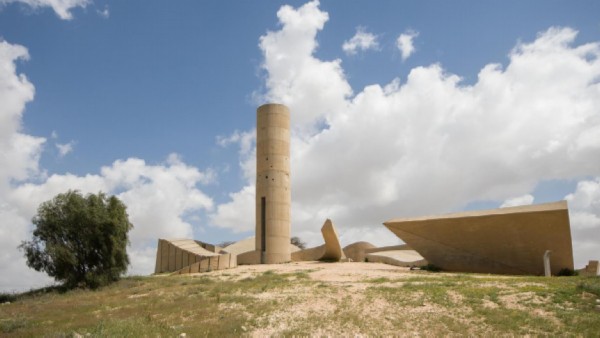Ilinden Memorial or Makedonium

Time of creation – 1970-1974
Author — Jordan and Iskra Grabul
Location – Krushevo, Macedonia
Dimensions and materials – 25 m in diameter. Concrete, rebar, glass
What is dedicated to
The main historical event that this monument commemorates is the uprising of the Macedonian rebels in Ilinden on August 2, 1903 against Ottoman rule. In addition, it is dedicated to the memory of local fighters who fought under the partisan banner during World War II.

History of creation
During the open competition, the winners were a married couple, Jordan and Iskra Grabul. The commission, which was charged with preserving the artistic value and social significance of the project, insisted on more traditional and figurative components of the memorial, while the Graboules wanted the monument to be entirely abstract. As a result, the final version of the monument was radically different from the concept approved by the jury.

Symbolism
The memorial complex consists of several sculptural elements: a series of large concrete “chains” along the road that leads to a two-walled crypt with the names of 58 prominent Macedonian revolutionaries. Directly in front of the monument is a large and colorful relief wall. Finally, at the top of the hill is Macedonia. This concrete mace, 25 meters high, studded with many tubular protrusions, got its name in honor of the construction company involved in the construction.
The Grabouli have integrated a significant amount of symbolism into their memorial complex: the entrance doors resemble the letter “M” and the eternal flame inside the monument is shaped like the Macedonian flag. There are four fractal stained-glass windows by the Macedonian artist Borko Lazeski in the ceiling, which symbolize the four seasons and create a striking contrast with the snow-white interior. Jordan Grabul created a series of bas-reliefs on the interior walls that tells the story of Macedonia through abstract images of birth, conflict and liberation.
In 1990, a memorial was erected inside the dome to the schoolteacher Nikola Karev, who led the uprising against Ottoman rule. The tomb is a cube of white marble with a missing piece in one of its corners, as a reminder that Karev died with his life’s work unfinished – the independence of the Republic of Krushevo.







